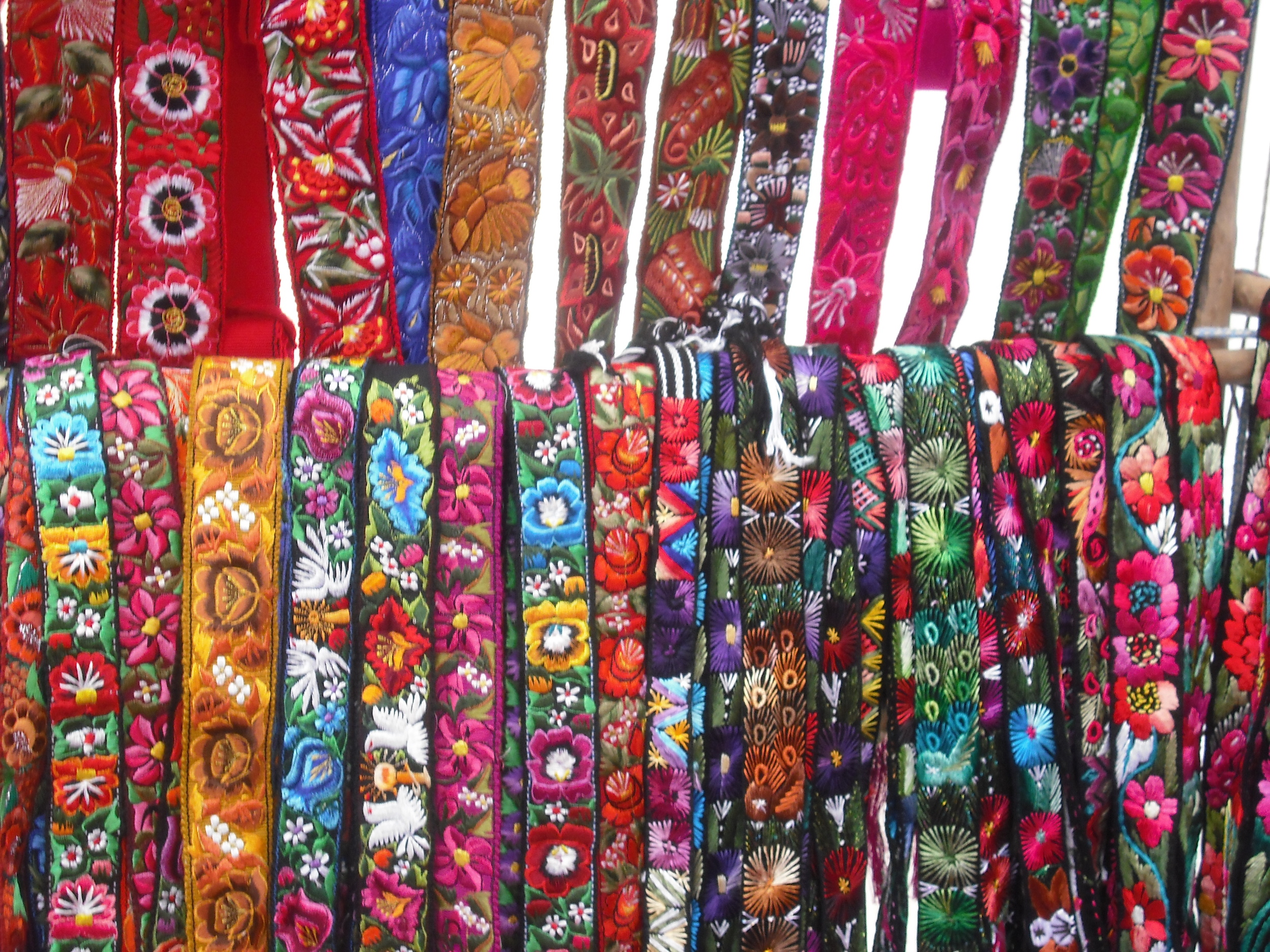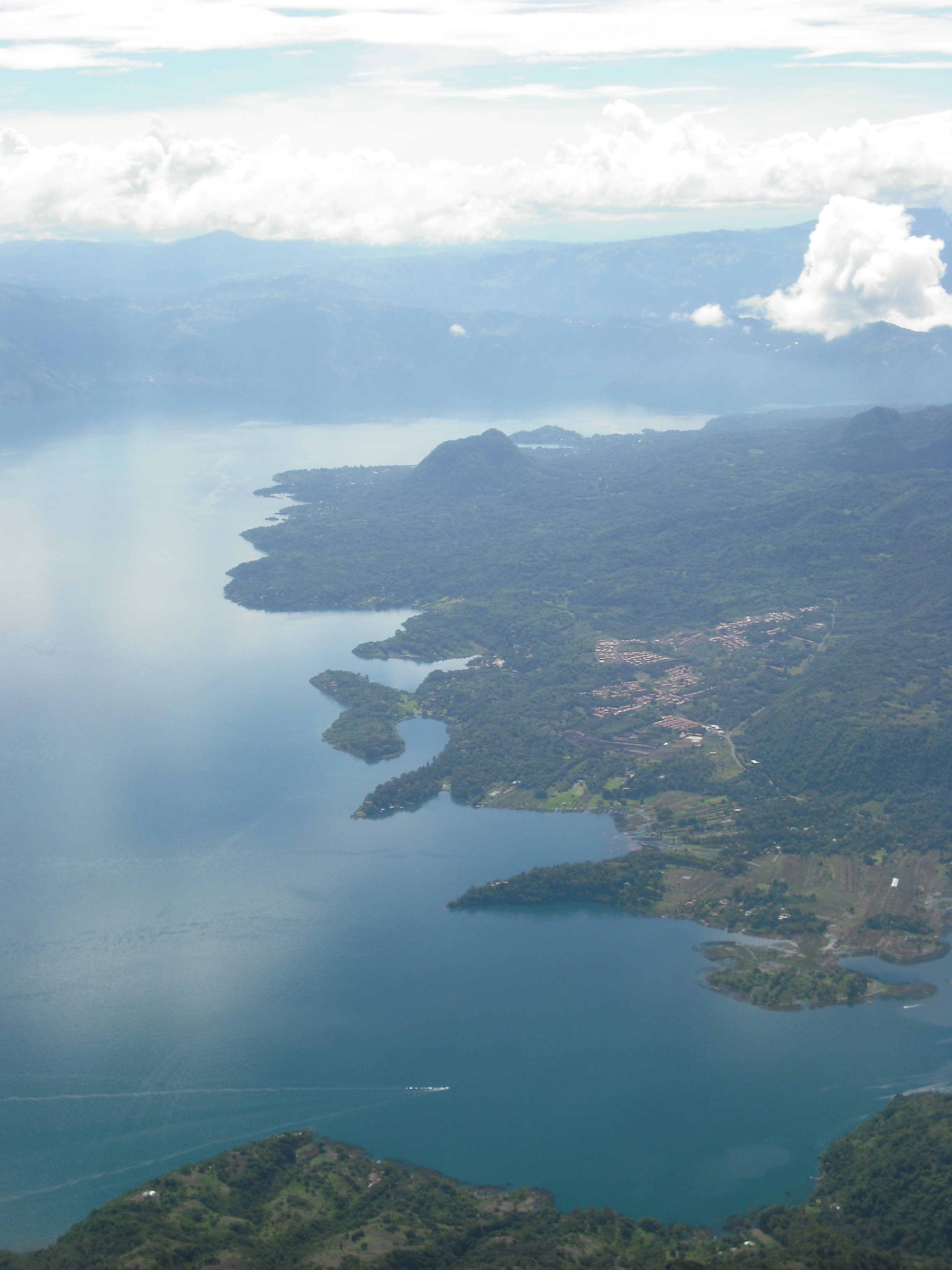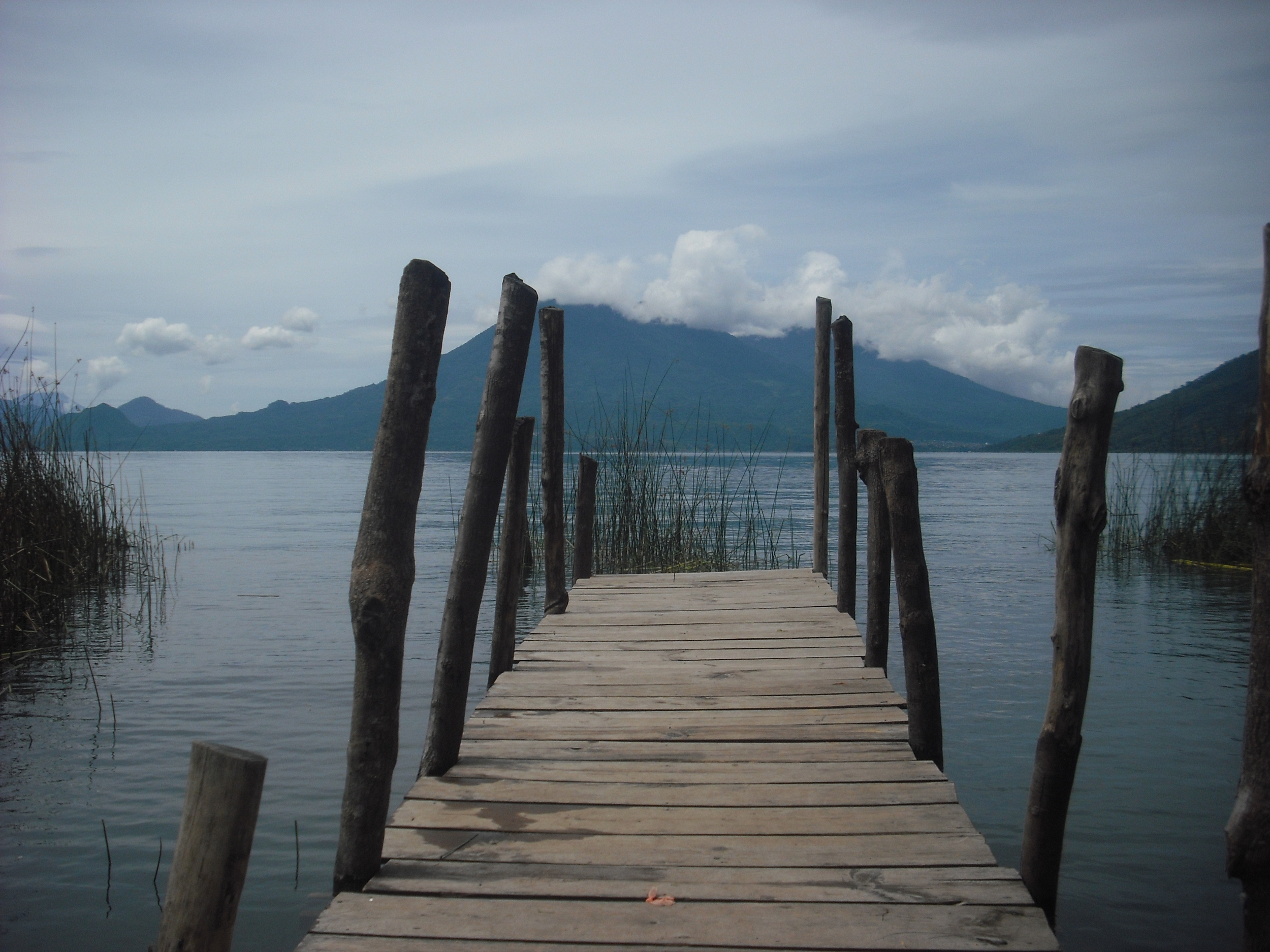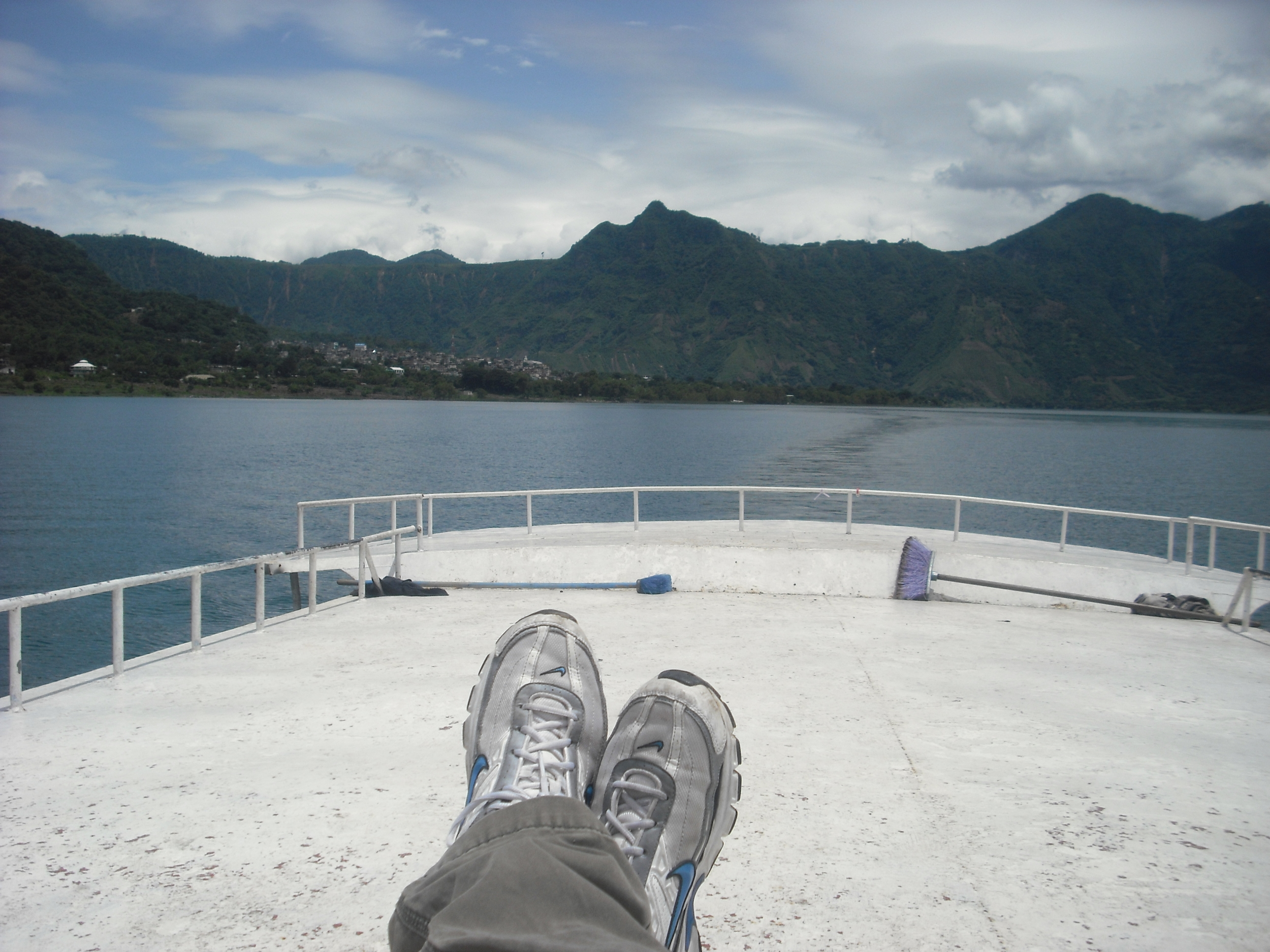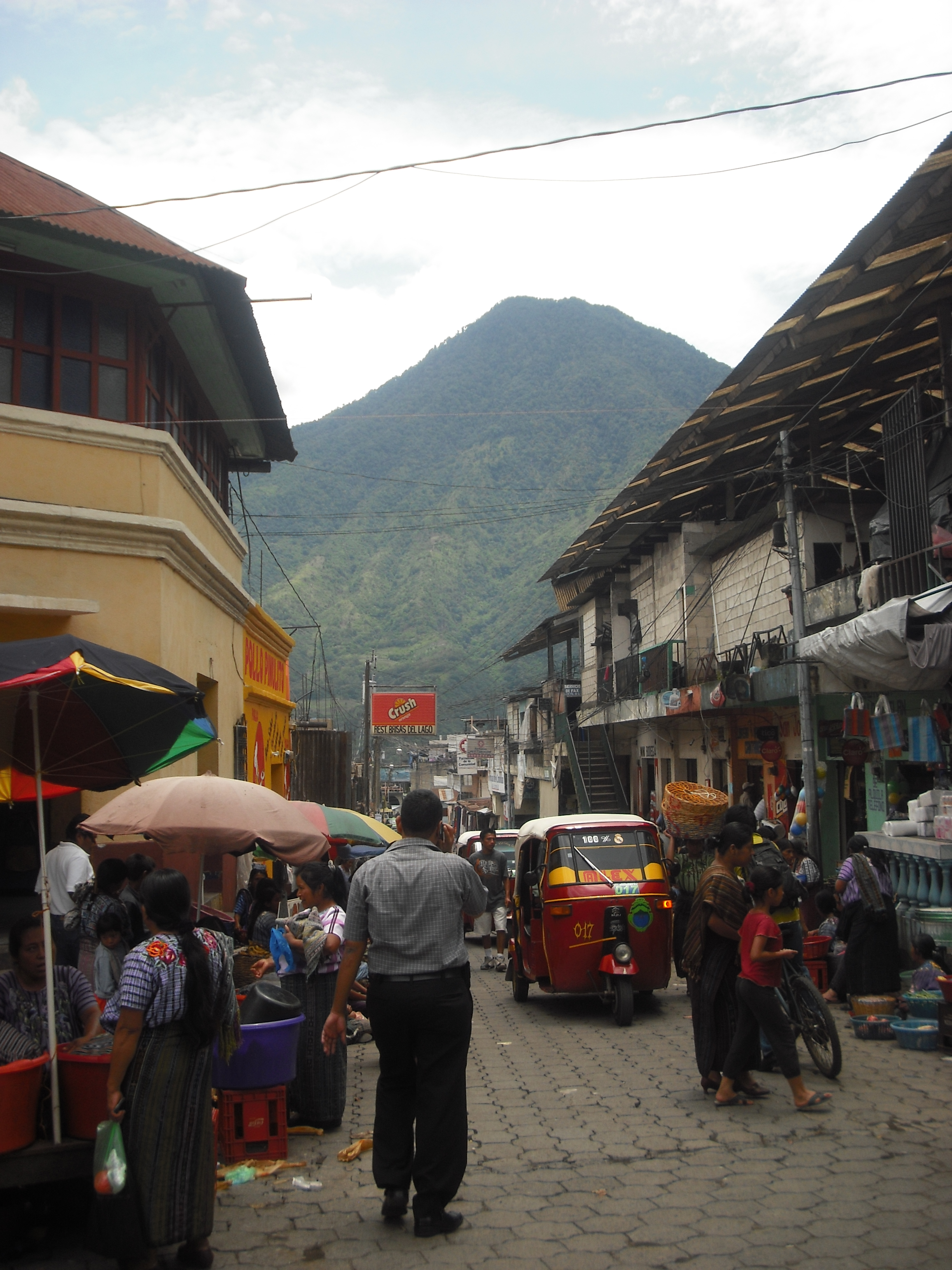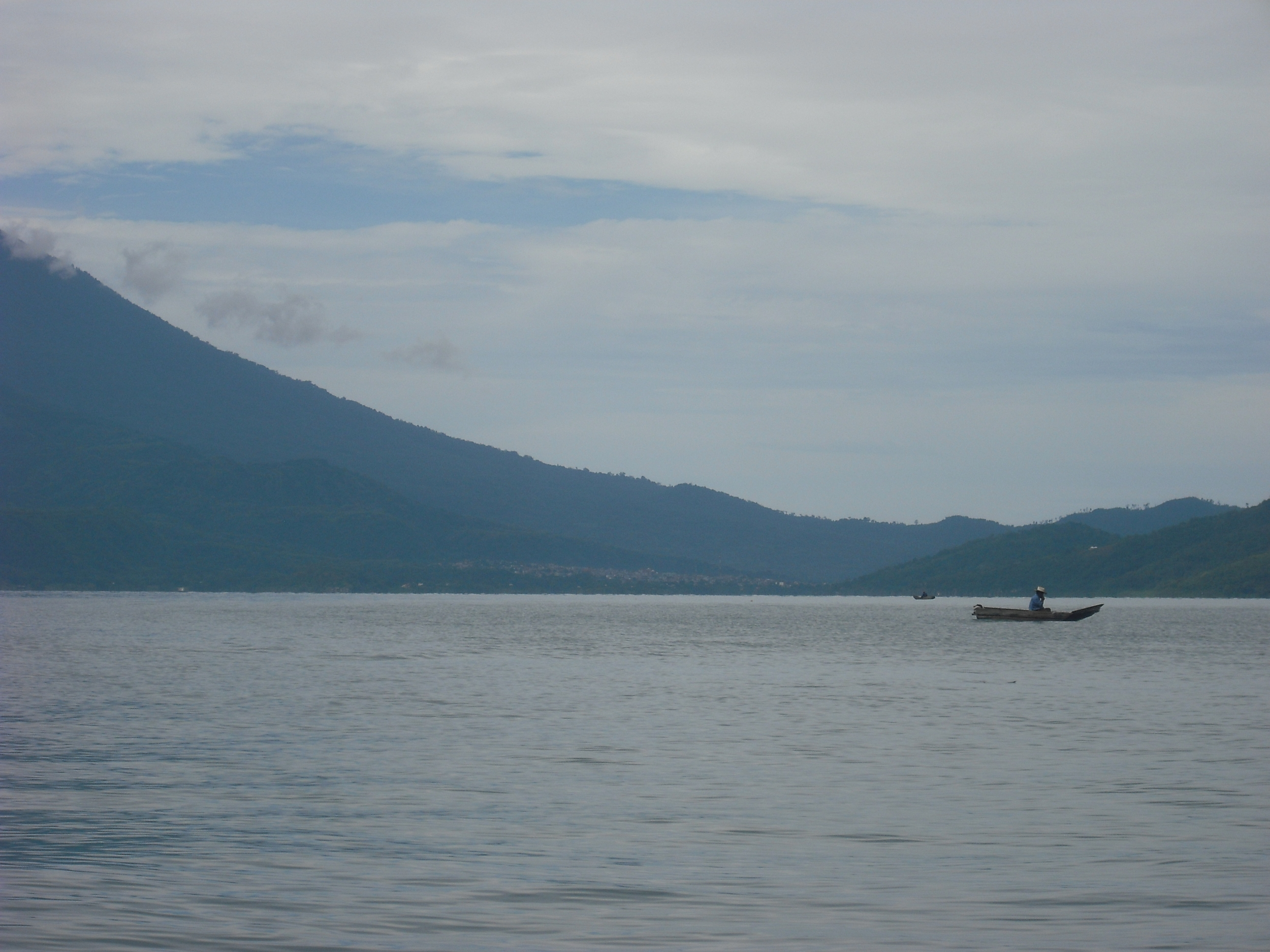This is old ('97) but worth a read: Christopher Hitchens reviews John Lee Anderson's biography of Che, along with Guevara's own Motorcycle Diaries.
from Baltimore to Central America via David Simon's imagination
David Simon, creator of The Wire and newly minted MacArthur Fellow, is interviewed by Bill Moyers in Guernica. It's one of the best things I've read in quite a while.
David Simon: You talk honestly with some of the veteran and smarter detectives in Baltimore, the guys who have given their career to the drug war, including, for example, Ed Burns, who was a drug warrior for twenty years, and they’ll tell you, this war’s lost. This is all over but the shouting and the tragedy and the waste. And yet there isn’t a political leader with the stomach to really assess it for what it is.Bill Moyers: So whose lives are less and less necessary in America today?
David Simon: Certainly the underclass. There’s a reason they are the underclass. We’re in an era when you don’t need as much mass labor; we are not a manufacturing base. People who built stuff, their lives had some meaning and value because the factories were open. You don’t need them anymore.
When I first moved to Baltimore I avoided watching The Wire for several months because I didn't want it to color my first impressions, and I've still only had time to watch the first season. But based on that alone, The Wire was a work of art, and one that was always risky in terms of commercial success because of the length of its story arcs.
A while back Kottke highlighted Simon's original pitch for the series (emphasis added):
But more than an exercise is realism for its own sake, the verisimilitude of The Wire exists to serve something larger. In the first story-arc, the episodes begin what would seem to be the straight-forward, albeit protracted, pursuit of a violent drug crew that controls a high-rise housing project. But within a brief span of time, the officers who undertake the pursuit are forced to acknowledge truths about their department, their role, the drug war and the city as a whole. In the end, the cost to all sides begins to suggest not so much the dogged police pursuit of the bad guys, but rather a Greek tragedy. At the end of thirteen episodes, the reward for the viewer -- who has been lured all this way by a well-constructed police show -- is not the simple gratification of hearing handcuffs click. Instead, the conclusion is something that Euripides or O'Neill might recognize: an America, at every level at war with itself.
And not just with itself. The Guernica interview I quoted from above resonated with me because I had just finished this Economist article on "Central America: the tormented isthmus" which outlines the many ways in which America's appetites and means result in our internal war being continuously foisted upon other countries.
Nearly all the world’s cocaine is produced in Colombia, Peru and Bolivia. The biggest consumer is the United States, where the wholesale price of a kilo of the stuff, even full of impurities, starts at $12,500. The route to market used to run from Colombia to the tip of Florida, across the Caribbean. But the United States Coast Guard shut down that corridor by the early 1990s, and shipments switched to the Pacific coast of Mexico. Now Mexico, too, has increased the pressure on the traffickers, just as Colombia has done in the south.
Ever supple, the drugs business has sought new premises. Somewhere between 250 and 350 tonnes of cocaine—or almost the whole amount heading for the United States—now pass through Guatemala each year, according to American officials...
The impact has been lethal. Guatemala’s murder rate has doubled in the past decade. In both Guatemala and El Salvador, the rate of killing is higher now than during their civil wars.
The comments on that article led me to this BBC article from April 7, on the drug-fueled violence in Mexico.
This view [that the violence is the result of fighting between rival criminal gangs, a sign of progress in the drug war] was echoed by the head of the US Drug Enforcement Administration, Michele Leonhart, at an international conference in the Mexican City of Cancun on Wednesday.
"It may seem contradictory, but the unfortunate level of violence is a sign of success in the fight against drugs," the DEA chief said.
And that must also mean that the increasing violence in Central America due to shifts in drug trafficking patterns is truly a sign that we're winning the future. If this is success, maybe we'd all be better of with failure.
Gates and Media Funding
You may or may not have heard of this controversy: the Gates Foundation -- a huge funding source in global health -- has been paying various media sources to ramp up their coverage of global health and development issues. It seems to me that various voices in global health have tended to respond to this as you might expect them to, based on their more general reactions to the Gates Foundation. If you like most of Gates does, you probably see this as a boon, since global health and development (especially if you exclude disaster/aid stories) aren't the hottest issues in the media landscape. If you're skeptical of the typical Gates Foundation solutions (technological fixes, for example) then you might think this is more problematic.
I started off writing some lengthy thoughts on this, and realized Tom Paulson at Humanosphere has already said some of what I want to say. So I'll quote from him a bit, and then finish with a few more of my own thoughts. First, here is an interview Paulson did with Kate James, head of communications at the Gates Foundation. An excerpt:
Q Why does the Gates Foundation fund media?
Kate James: It’s driven by our recognition of the changing media landscape. We’ve seen this big drop-off in the amount of coverage of global health and development issues. Even before that, there was a problem with a lack of quality, in-depth reporting on many of these issues so we don’t see this as being internally driven by any agenda on our part. We’re responding to a need.
Q Isn’t there a risk that by paying media to do these stories the Gates Foundation’s agenda will be favored, drowning out the dissenting voices and critics of your agenda?
KJ: When we establish these partnerships, everyone is very clear that there is total editorial independence. How these organizations choose to cover issues is completely up to them.
The most recent wave of controversy seems to stem from Gates funding going to an ABC documentary on global health that featured clips of Bill and Melinda Gates, among other things. Paulson writes about that as well. Reacting to a segment on Guatemala, Paulson writes:
For example, many would argue that part of the reason for Guatemala’s problem with malnutrition and poverty stems from a long history of inequitable international trade policies and American political interference (as well as corporate influence) in Central America.
The Gates Foundation steers clear of such hot-button political issues and we’ll see if ABC News does as well. Another example of a potential “blind spot” is the Seattle philanthropy’s tendency to favor technological solutions — such as vaccines or fortified foods — as opposed to messier issues involving governance, industry and economics.
A few additional thoughts:
Would this fly in another industry? Can you imagine a Citibank-financed investigative series on the financial industry? That's probably a bad example for several reasons, including the Citibank-Gates comparison and the fact that the financial industry is not underreported. I'm having a hard time thinking of a comparable example: an industry that doesn't get much news coverage, where a big actor funded the media -- if you can think of an example, please let me know.
Obviously this induces a bias in the coverage. To say otherwise is pretty much indefensible to me. Think of it this way: if Noam Chomsky had a multi-billion dollar foundation that gave grants to the media to increase news coverage of international development, but did not have specific editorial control, would that not still bias the resulting coverage? Would an organization a) get those grants if it were not already likely to do the cover the subject with at last a gentle, overall bias towards Chomsky's point of view, or b) continue to get grants for new projects if they widely ridiculed Chomsky's approach? It doesn't have to be Chomsky -- take your pick of someone with clearly identifiable positions on international issues, and you get the same picture. Do the communications staffers at the Gates Foundation need to personally review the story lines for this sort of bias to creep in? Of course not.
Which matters more: the bias or the increased coverage? For now I lean towards increased coverage, but this is up for debate. It's really important that the funding be disclosed (as I understand it has been). It would also be nice if there was enough public demand for coverage of international development that the media covered it in all its complexity and difficulty and nuance without needing support from a foundation, but that's not the world we live in for now. And maybe the funded coverage will ultimately result in more discussion of the structural and systemic roots of international inequality, rather than just "quick fixes."
[Other thoughts on Gates and media funding by Paul Fortner, the Chronicle of Philanthropy, and (older) LA Times.]
Tuskegee in Guatemala
The news that a US government study in the 1940s involved injecting Guatemalans with syphilis has been circulating, and it makes my stomach turn. Susan Reverby -- the Wellesley historian who uncovered the fiasco -- has made the draft paper available on her website: "'Normal Exposure' and Inoculation Syphilis: A PHS 'Tuskegee' Doctor in Guatemala, 1946-48," which will be published in the Journal of Policy History in January.
From the introduction:
Policy is often made based on historical understandings of particular events, and the story of the “Tuskegee” Syphilis Study (the Study) has, more than any other medical research experiment, shaped policy surrounding human subjects. The forty-year study of “untreated syphilis in the male Negro” sparked outrage in 1972 after it became widely known, and inspired requirements for informed consent, the protection of vulnerable subjects, and oversight by institutional review boards.
When the story of the Study circulates, however, it often becomes mythical. In truth the United States Public Health Service (PHS) doctors who ran the Study observed the course of the already acquired and untreated late latent disease in hundreds of African American men in Macon County, Alabama. They provided a little treatment in the first few months in 1932 and then neither extensive heavy metals treatment nor penicillin after it proved a cure for the late latent stage of the disease in the 1950s. Yet much folklore asserts that the doctors went beyond this neglect, and that they secretly infected the men by injecting them with the bacteria that causes syphilis. This virally spread belief about the PHS’s intentional infecting appears almost daily in books, articles, talks, letters, websites, tweets, news broadcasts, political rhetoric, and above all in whispers and conversations. It is reinforced when photographs of the Study’s blood draws circulate, especially when they are cropped to show prominently a black arm and a white hand on a syringe that could, to an unknowing eye, be seen as an injection.
Historians of the Study have spent decades now trying to correct the misunderstandings in the public and the academy, and to make the facts as knowable as possible. The story is horrific enough, it is argued, without perpetuating misunderstanding over what really did happen and how many knew about it. What if, however, the PHS did conduct a somewhat secret study whose subjects were infected with syphilis by one of the PHS doctors who also worked in “Tuskegee?” How should this be acknowledged and affect how we discuss historical understandings that drive the need for human subject protection?
(Emphasis added.) And later:
Ironically, though, the mythic version of the “Tuskegee” Study may offer a better picture of mid-century PHS ethics than the seemingly more informed accounts. For Public Health Service researchers did, in fact, deliberately infect poor and vulnerable men and women with syphilis in order to study the disease. The mistake of the myth is to set that story in Alabama, when it took place further south, in Guatemala.
Interestingly, the episode happened during a period of hope in Guatemalan history -- one of elections and land reforms, before decades of civil war that followed our overthrow of the democratically elected government:
The United Fruit Company owned and controlled much of Guatemala, the quintessential “banana republic,” in the first half of the 20th century. When the PHS looked to Guatemala for its research in the immediate post-World War II years, it came into the country during the period known for its relative freedoms; between 1944 and the U.S. led CIA coup of the elected government in 1954, there were efforts made at labor protection laws, land reform, and democratic elections. The PHS was part of the effort to use Guatemala for scientific research as they presumed to transfer laboratory materials, skills, and knowledge to Guatemalan public health elite.
And one last tidbit:
In reporting to Cutler after he returned to the States, he explained that he had brought Surgeon General Thomas Parran up to date and that with a “merry twinkle [that] came into his eye…[he] said ‘You know, we couldn’t do such an experiment in this country.’”60
Read the whole thing.
The market at Chichicastenango
Volcanoes & Panoramas
This summer I climbed Volcan San Maria, above Xela (Quetzaltenango), Guatemala, on my second day in town. I took a series of photos from the summit looking back towards Xela, and my dad stitched three of those together using Panorama Maker 4 by Arcsoft. The result (click for the full-size image):
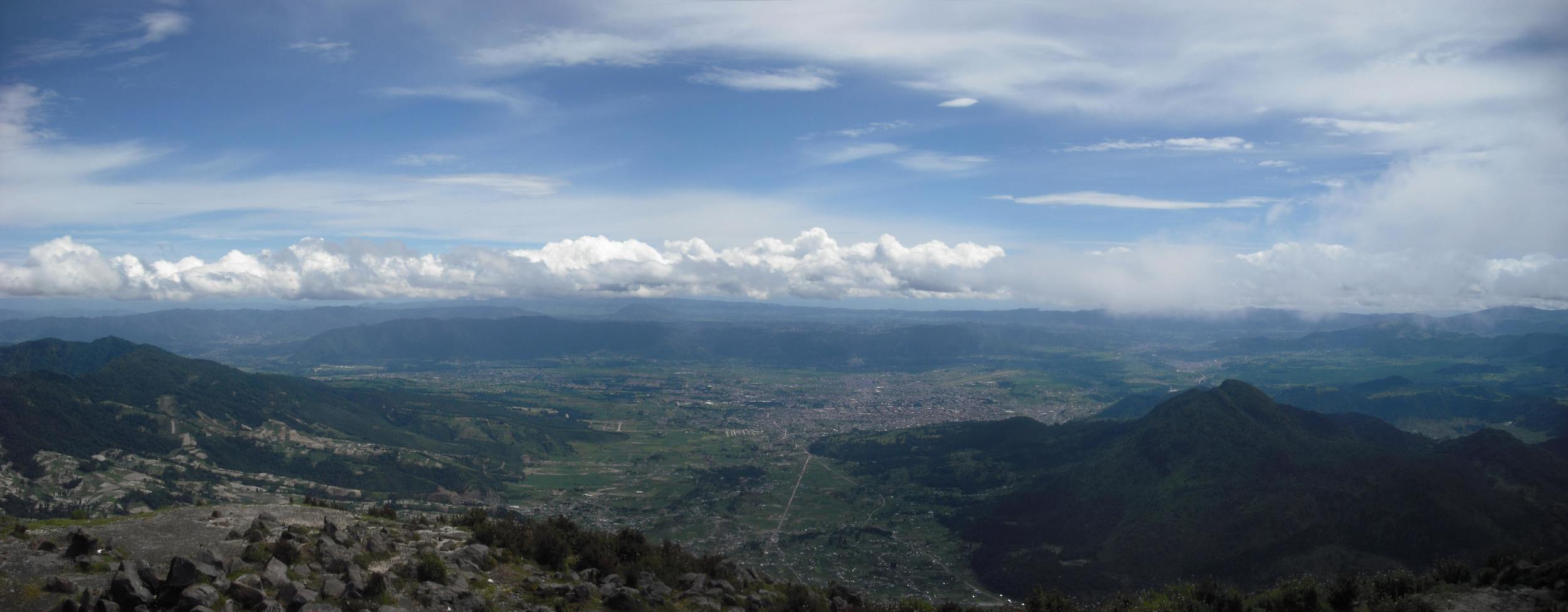
And here are a couple shots from later in my trip, from on top of Volcan San Pedro looking down on the beautiful Lago de Antitlan:
Reboot
As should be obvious now, I got a bit behind on blogging while in Guatemala. I was hopeful that this blog would serve as a reminder to myself to write more regularly, as well as a convenient conduit for sharing travel stories and photos with friends and families. But as I fell more and more behind, I started emailing those stories and photos directly to the friends I felt the greatest need to share them with, and the blog fell behind. I hope to post some photos and additional travel stories from Guatemala in the coming weeks, but mostly I'll try not to make promises I can't keep. So sometimes I'll write about public health and epidemiology, sometimes about politics, about rockets, etc.
I moved to Baltimore about 3 1/2 weeks ago, and a little over a week ago I started classes for a Master in Health Science (MHS) in Global Disease Epidemiology and Control (GDEC) through the Department of International Health at the Johns Hopkins Bloomberg School of Public Health. That's the longest name for a program ever, so we mostly just call it an "MHS in GDEC." Basically, it's an intensive program in international health, especially the epidemiology of infectious diseases and vaccine development and testing. I'll take classes in Baltimore for 4 terms (one academic year), take comprehensive exams in June of 2011, and then head somewhere overseas for 4-12 months for my practicum. I can come back and take additional classes if I want to, but that's optional. GDEC--the program, the people, the pace--is already awesome, and I expect that it will only get more awesome and intense as it goes.
Arrival, part 2
I changed a bit of money* and then headed to the taxis. Guatemala City is divided into 27 zonas, with the airport in Zona 3 and my destination – and most of the stuff worth seeing – in Zona 10. At the taxi queue I asked a Guatemalan passenger what he thought a fair taxi price was to Zona 10 – the taxi drivers within earshot were unhappy with him for quoting a price when he wasn’t giving rides – and then I was putting my bags in a car, climbing in, buckling up, and locking the doors. Travel – and the stories that come from it – only makes sense in context. New York City would be tame to someone from Beijing, but to a city boy it’s a brilliant cacophony. I tried to imagine what it would have felt like to experience Guatemala City if I’d never traveled. And it’s impossible – everything is comparison:
Good major roads. Well, not good, but better than a lot of places. Fast drivers. A bit crazy. Well, not that crazy. Dull buildings – kind of like Athens, but not that dull. Hilly too, and surrounded my mountains – also kind of like Athens. But green, green everywhere, like Accra. Maybe a bit like Los Angeles, if a map of LA were wadded up so that all the empty spaces in between were filled in with city, and then drenched with ten times as much rain for half the year.
My first stay was a hostel called Quetzalroo, a hostel started by a Guatemalan, Manuel, and an Australian, Jodi, just three months ago. I found them through CouchSurfing.com (more on that later). Quetzalroo is named for the quetzal – the national bird of Guatemala, and the kangaroo, the national whatever of Australia. The hostel was comfy, with dorm rooms – mostly empty the night I was there – a kitchen, a small, sunny eating room, and a computer on which I could email a sure-to-be-worried madre (love you, Mom!).
When I arrived Jodi was about to leave to meet Manuel for his lunch break – he works at the Canadian embassy, doing something regarding Guatemalans who want to move to Canada – so I tagged along. We got Spanish food at a small restaurant (where, like with 90% of the other businesses I’ve patronized in Guatemala, had a TV playing the World Cup) and Manuel introduced me to Guatemala by drawing a map on a napkin, outlining the regions of the country and the must-see attractions. The flip side of the napkin produced a mini-map of Zona 10, also known as a Zona Viva – the “lively zone” and soon – within three hours of landing – I was on my own, walking up a street in the city. A bus belched black smoke on me. Horns blared. Rain clouds threatened. And yet, I couldn’t help but feel great sense of freedom.
I stopped into the massive, immaculate Oakland Mall, which I’m told is one of the largest malls in Central America. Four levels, hundreds of stores, dozens of restaurants, fountains – including one with a constant laser light show – and brands from around the world, but mostly from the US, and to a lesser extent, Europe. Then it was up the road past the hostel towards a few museums inside the grounds of the libertarian university Manuel attended [in our first hour he asked if I’d read Atlas Shrugged]. On the way the threatening clouds starting delivering on their promises and I ducked into a fast food joint to sit out the rain and pour over my Lonely Planet Guatemala section on Zona Viva. Lesson: you brought an umbrella, keep it with you; they don’t call it the rainy season for nothing.
After the rain I hiked down a steep hill to the Museum Ixchel, which presents traditional textiles from throughout Guatemala. I’m not much of a fabric guy, but this was pretty cool. Guatemalan indigenous (ie, Mayan) culture is known for its brightly colored fabrics, which vary from region to region, sometimes with such specificity that Maya can recognize what town someone is from by their clothing. To the outside eye there’s less information to it, and more dazzle.
I didn’t have enough quetzales on me (oops!) to get into Museo Popol Vuh – with archaeological finds from throughout Guatemala, so that one will have to wait until I’m back in the City.
Back at Quetzalroo, I discovered that they had an acoustic guitar, which is (along with alcohol) an important social catalyst at hostels the world over. Turns out Jodi can sing, so we went down the list of 90s classics. The night ended with Manuel and I watching City of God, an incredibly violent and compelling Brazilian film (with subtitles) about the cocaine trade in an impoverished slum of Rio de Janeiro.
What a long day. En manana, necesito tomar un camioneta (“chicken bus”) a Lago de Antitlan.
*A note on money: The current exchange rate is about 8 queztales to the US dollar, which means a 20q bill is about $2.50, and the wad of 100q bills I had were worth $12.50 each. Like the rest of the world, Guatemala is now plastered with ATMs, so getting money isn’t a problem, as long as you have it.
Arrival, part 1
I took the Super Shuttle to Reagan National Airport at about 3:30 in the morning. Since I’d been up late packing, that meant I only slept for an hour or two. That’s OK – I hate flying, so I like to sleep on the plane. [I like to think that my fear of flying comes in part from a vivid, sometimes morbid imagination. While the rational side of me knows the flight is the single safest part of any trip abroad, the imaginative side of me knows that NTSB investigators can determine whether a plane was downed by a bomb in part by analyzing the remains of passengers from different parts of the planes and making a map of their varying degrees of “intactness.”] One of the other Super Shuttle passengers was a brawny guy in his mid to late 30’s. We talked about where we were going; him to Miami, me to Guatemala. He said he worked in retail and it was basically a dead-end job, so he admired my balls (his words) at being able to quit my job, travel and go to grad school for what I’m passionate about. A little bit of travel talk and affirmation makes a 4 AM bus ride go much smoother.
The lines moved fine at Reagan, though in the luggage one I was stuck behind a big church group. You can often tell these groups because they wear obnoxiously colored matching t-shirts, seemed unused to travel in general, and are led by a guy named Pastor Bob (es la verdad!). They were headed to Kingston, Jamaica, for what I’m sure will be an extremely arduous one to three weeks spreading the gospel. I can’t be too negative though – I cut my teeth traveling with mission groups, and it’s a great way to get to environs that most non-church people of similar means rarely reach.
My flight to Atlanta and the transfer were uneventful, and soon I was boarding my plane for Guatemala City. There’s a certain psychological shift when you board an international flight; especially to a new country. Suddenly you’re on a plane that is half Guatemalans and half Americans. Or rather, 50% Guatemalans with lots of things they bought in the US, 30% mission groups in matching shirts, and 20% nondescript persons or soon-to-be mangy backpackers. And then you’re wheels up and there’s no turning back – just a few hours of napping and an optional $8 crummy airplane sandwich (no thanks) away from something completely new.
As we descended into Guatemala City the view from the windows was grand. The clouds only covered half of the sky, and the rest was mountains. Green, rolling mountains, not snow-capped peaks.
Touchdown, and the passengers break into scattered applause. That part never gets old.
(to be continued…)
Packing
Packing for this trip wasn’t too difficult. It’s always easier to pack for a trip where you’ll be in one place for a while. Had I been planning to backpack through Guatemala or elsewhere in Central America for six weeks, the weight and volume of my things would have been a larger concern. Still, I wanted to be able to carry everything fairly easily. So, I packed in my medium-sized North Face backpack – the one I’ve been traveling with for years now – and a duffel bag. I also brought along a smaller backpack (I picked it up at a thrift store) that’s perfect for day trips. My clothes are good for layering, from a swimsuit and running clothes to a few long sleeve shirts and a heavier sweater. Xela is at 7,800 feet and it’s the rainy season, so the weather is cold (but not freezing) and a lot of water falls from the sky. Then there are toiletries and snacks – for the trips and for when I’m just tired of tortillas. I also brought a few notebooks and a Spanish dictionary and a phrasebook. Books I brought included Rigoberta Menchu’s autobiography (about Guatemala), the Bourne Supremacy, Black Lamb and Grey Falcon (about the former Yugoslavia), In the Wake of the Plague (about Europe), and of course, Lonely Planet’s Guatemala guide book. At the bottom of my duffel bag is my epidemiology textbook, in case I get tired of studying Spanish and want some stats for a change.
The largest single item I packed is a used Dell laptop I picked up for $100 on Craigslist. I figure if it gets stolen, it’s no great loss, but it will allow me to write about my travels as I go. And if I get through the trip with it in one piece, I can sell it in Xela or Guatemala City or back in the states on Craiglist, likely for as much as I bought it for. It’s much nicer to write at a relaxed pace when I get the chance, save the documents to a tiny thumb drive I carry in my money pouch, and transfer it to a computer at an Internet café.
I’ve got two digital cameras – one a point-and-shoot that fits in a front pocket, the other a slightly nicer point-and-shoot with a more rounded profile and a decent zoom. I decided to leave the larger one at home for two reasons: the larger camera is more likely to get stolen since it’s harder to conceal by slipping into a pocket, and it eats up AA batteries at a steady clip.
As I travel, I keep a small notebook with me - it’s about 8 inches tall and 4 inches wide. It’s the perfect size to keep handy and jot down observations: the way the mist came over that mountain, the way the cobrador swings in the back of the chicken bus...
I finished packing, sewing up a few holes in my backpacks, and sending final emails at about 1:00 in the morning the night before my flight...
Numbers - Week One
I think I will finally have time to write more this evening, and I plan to post about my travels mostly in chronological order. But here´s a summary of my first week: Methods of transportation taken and iterations thereof: planes (2), taxis (2), boat (6), decent bus (1, in DC), chicken buses (7)
People a chicken bus is designed to transport: 40 (10 double rows of seats for 2 people each)
Most people seen on one chicken bus: 67
US dollars paid for a Guatemalan cell phone: 19
Children in my host family: 3
Family members at the house the evening I arrived: 9
Nationalities met so far: 9 (Guatemalan, American, Canadian, Danish, Swedish, Australian, Italian, British, Irish... and I´m sure I´m missing some!)
Here
I arrived in Guatemala City on Tuesday afternoon, spent Tuesday night there, and then took the chicken bus up to Lago de Antitlan. I spent the last two nights in San Marcos la Laguna on the lake. I don´t have a lot of time to write at the moment, but I thought I should share a few photos from the trip so far:
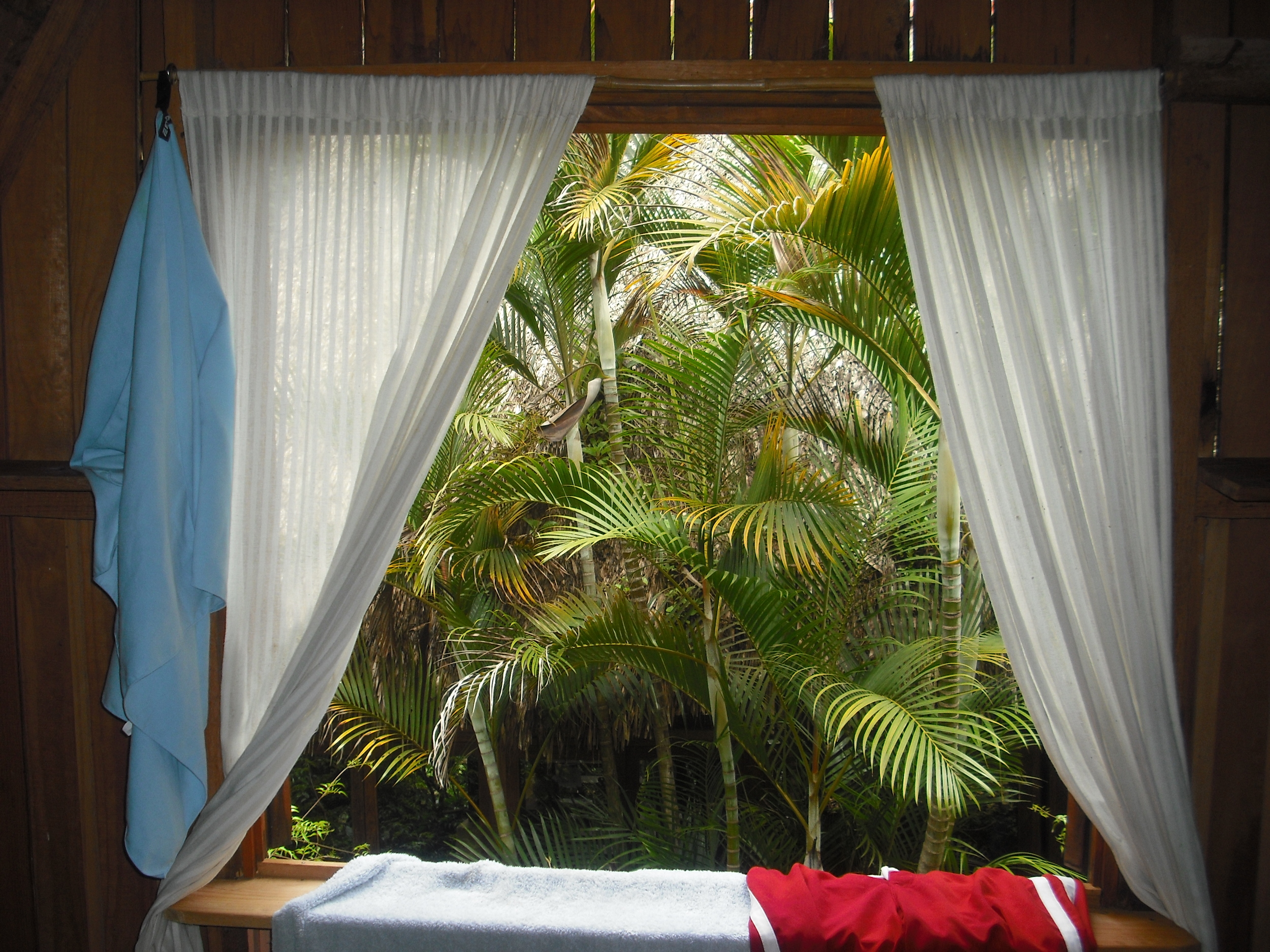
More soon...
Guatemala
I'll be traveling in Guatemala from June 15 until July 29 this summer -- primarily studying Spanish in Xela, but also hiking volcanoes, enjoying a little beach time, and exploring Mayan ruins. I also hope to write a bit. Not too much, not too little -- just enough to enhance the experience of being there. After all, a big part of the appeal of traveling and experience other cultures is the act of sharing that knowledge and experience with others. Forty-four days in Guatemala. It one sense, it's really not that long. At most, I'll get in five weeks of classes at Celas Maya. Even with five hours of one-on-one instruction five days a week and a homestay with a Guatemalan family, that's hardly enough time to reach any reasonable level of competency in Spanish -- though it can't hurt either.
In another sense, 44 days is a long time. It will be the longest trip I've done by myself. When I finished studying abroad near Athens, Greece in 2005, the ticket home I bought was from Moscow to Arkansas (via New York), and the flight out was 40 days after the end of my school term. It was a pretty exhausting 40 days; a whirlwind tour from Greece through Southern Europe to Portugal, back across to Croatia, up through eastern Europe to Poland, and through Scandinavia to Finland, Estonia, and Russia, all without seeing anyone I knew. Looking back, it was an amazing experience, but the pace was a bit crazy.
This trip to Guatemala will also be the longest period of time I've spent in a developing country. I was in Ghana for five weeks (as a "missionary intern"), South Africa for three, Zambia for two, and Mexico, Guyana, and Egypt each for about 7-10 days. Needless to say, my experience is relatively broad but not very deep. 6 weeks in Guatemala won't exactly fix that, but being based in one place for that long will be a step in the right direction. And being rooted in Xela will allow me to make friends with other students and Guatemalans in a way I wouldn't be able to if I were just backpacking through.
In August I'll start graduate studies in international health, and this time next year I'll be preparing for either a 4+ month practicum experience in the developing world, or Peace Corps service. So in that sense, Guatemala is really just a warm-up. Compared to the internationally-oriented career I'm planning, the time I've spent overseas feels fairly insignificant -- but you have to start somewhere!

